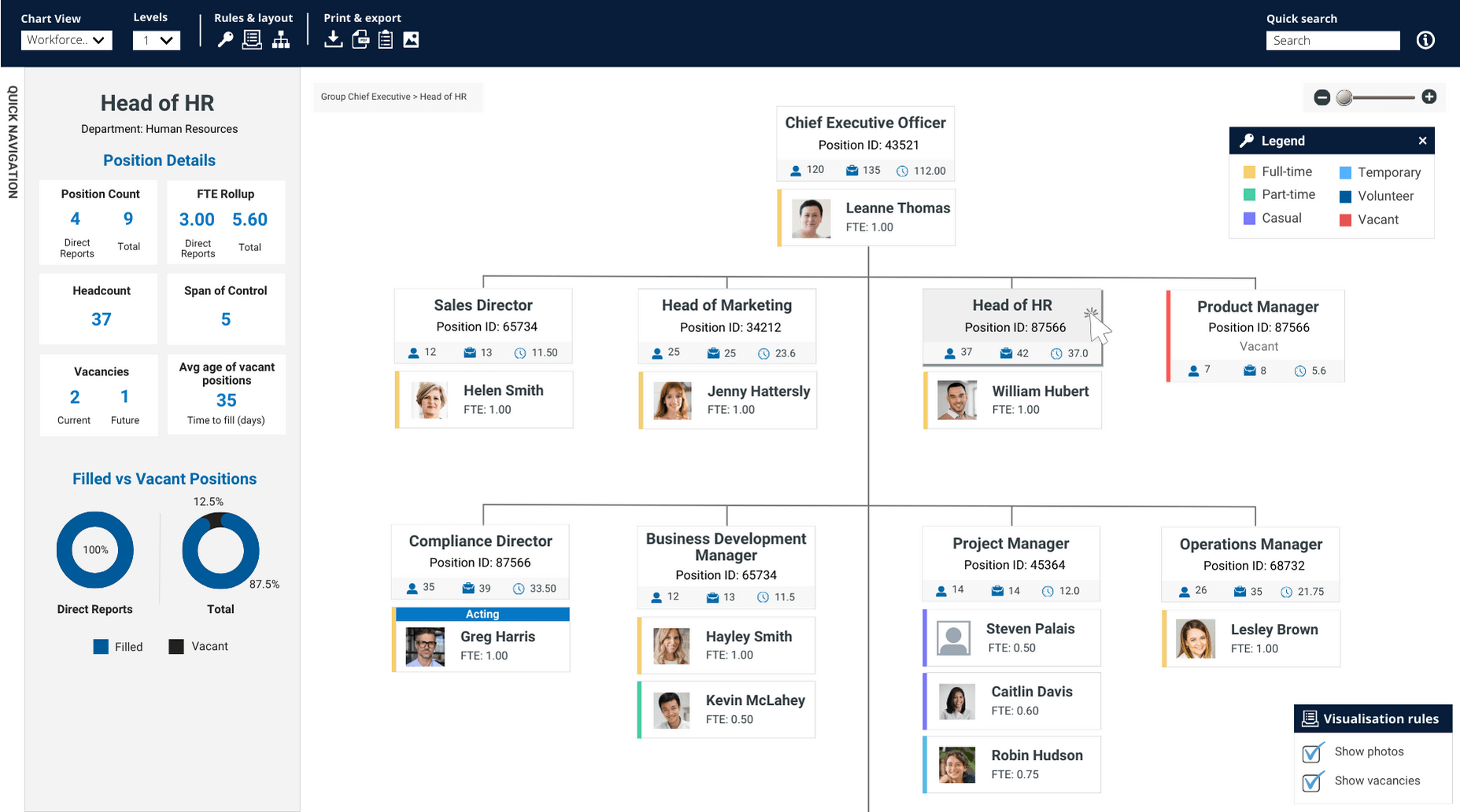Managing a growing team is a great project to be a part of, especially in HR. It’s exciting, your role often gets to expand with the company and above all, everyone is having success in their respective positions.
But no one ever said it was easy for you and the rest of the HR team to manage.
We recently ran a webinar where we interviewed Colleen and Maria from CITIC Pacific Mining about their experiences using a Navigo org charting tool during their rapid growth.
To put it into context, the company has gone from a handful of employees in 2006 up to 1,500 today.
Here’s 5 tips we can take away from their experience managing a growing team.
#1 tackle potential HR problems early
Implementing a new process, system or workflow is almost always a big task.
But waiting until you have more employees is only going to make it bigger.
Try to look into the future of the organisation to see potential issues before they become crippling. The easiest way to do this is to stop and ask yourself “if we were 10x larger than we are today, would this process still work with the same sized HR team?”
“It got difficult at around 500 employees.” – Colleen on where the HR problems began to mount for CITIC.
If not, you’ll need to work out a way to automate it sooner or later. Save yourself the headache and solve it now, whether that means reworking or automating your current workflows finding software to solve the problem for you.
#2 give Senior Management HR data access ASAP
When everyone has access to the same HR data (with security restrictions based on position, of course), better decisions will be made, faster.
The CITIC management team were often frustrated by the lack of up to date information on the team once they hit the 500 employee mark. Reports needed to be manually requested from HR, which put strain on the HR team and delayed decision making for managers.
The decision was made to adopt SAP as the HRIS with Navigo org charts as the data visualisation tool. With these two working in tandem, managers could export reports from excel on their own (once they were guided how to do so by Colleen and Maria) and the need for ad-hoc reporting vanished.
“My favourite feature is definitely the ‘export to Excel’ function [for managers]. Now, that feature would be a deal breaker for us [if we didn’t have it].”
– Colleen on giving senior managers access to HR data through org charts.
# 3 use software (or you’ll be replaced by someone who will)
As the team grows, you need to grow your skills with it. The easiest way to do so is to adopt software to increase your output without increasing the effort required.
It’s really important that you are the one finding and suggesting new HR tech (and the right HR tech for your requirements, too), or you’ll quickly find yourself replaced by someone with these skills externally.
“When we looked at Nakisa (the org charting tool) we found it was a bit slow and clunky….Navigo org charts just suited us much better,” – Maria on the org charting software selection process.
Most importantly, software will help you develop best practices. If you’re using a payroll system the way it’s designed, you’re going to be keeping up with all the other users of the same system by default. Learning how to use the software will enable you to also learn how larger organisations manage their people.

# 4 be ready to restructure regularly
Of course, it’s not just you who needs to grow and change with the organisation’s needs. The employees who are integral to the team in the early days may be redundant once you reach 1,000 employees.
Hopefully, restructuring to adjust to the new business requirements will involve amicable departures for those who are no longer required, but unfortunately this isn’t always the reality.
Having the skills and tools to manage restructures professionally and effectively will be an invaluable skill as the company grows. Using ‘bits of paper stuck on the wall,’ as Colleen and Maria’s team used to do, is extremely inefficient and messy.
Implementing a restructure tool can be ‘stressful and nerve-racking,’ but it makes it ‘much easier’ to manage the restructure process according to Colleen.
“Get it before you need it.” – Colleen on adopting Navigo org charts for managing a growing team.
# 5 delegate, outsource and upskill
As you grow, you can’t possibly take on all the work yourself. The best HR teams know what to delegate, what to specialise in, what to outsource and where the skills gaps are.
Take HR data validation, for example, by giving the entire organisation access to the same master data source, you ensure that inaccurate data is being monitored by everyone, not just HR. This ‘outsourcing’ to other departments will free up your time and make your data overall more useful. ‘When you show them how easily they can access the data, they get really animated,’ confirms Maria.
When it comes to software and processes, sometimes it makes more sense to get in a specialist consultant to set up the new tools and then manage them internally afterwards. That way, you aren’t taken away from your regular activities to implement a system, and you ensure everything is configured correctly.
The CITIC team, for example, take advantage of Navigo’s managed services, which allows them to call on our org charting specialists to setup new charts or views when they need them. Once set up, all Colleen and Maria need to do is maintain the charts and pass them on to the relevant decision makers.
“We just didn’t have the time to make charts as we grew….having Navigo create our charts just made sense.” – Colleen on outsourcing chart creation to Navigo as CITIC grew.
Managing a growing team: Final thoughts
Every organisation grows differently, so above all, you’re going to need to be flexible and ready to learn as your role changes. Similarly, make sure the tools you have are flexible enough to scale with your team.
Like to learn more about how we can help you’re business with easy-to-use, scalable tools?
Book a meeting with our team of experts today.



